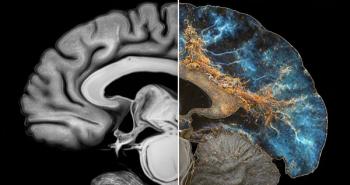
The Journal of Respiratory Diseases
- The Journal of Respiratory Diseases Vol 29 No 9
- Volume 29
- Issue 9
Answer to a reader's question on: CT scans in the evaluation of COPD
This question deserves a broad answer, considering how much has changed since the old high-resolution CT (HRCT) scans with 1-mm slices and 1-cm intervals.1-3 The advent of multidetector row CT has had a significant effect on the versatility and diagnostic capabilities of CT in general. Coupled with novel processes of image postprocessing-including quantification of lung disease using advanced software-the availability of multiplanar projections and the opportunity to perform virtual bronchoscopy have led to an improvement in what is available for the evaluation of COPD.
Using CT scans in the assessment of COPD
What role can CT scanning now play in the evaluation of chronic obstructive pulmonary disease (COPD)?
This question deserves a broad answer, considering how much has changed since the old high-resolution CT (HRCT) scans with 1-mm slices and 1-cm intervals.1-3 The advent of multidetector row CT has had a significant effect on the versatility and diagnostic capabilities of CT in general. Coupled with novel processes of image postprocessing-including quantification of lung disease using advanced software-the availability of multiplanar projections and the opportunity to perform virtual bronchoscopy have led to an improvement in what is available for the evaluation of COPD.
In the workup, physicians choose from a variety of diagnostic methods, depending on the clinical need and circumstances of the patient. COPD is a heterogeneous disease, and what is important for patients with emphysema (quantification and regional assessment of disease or planning of interventional bronchoscopic or surgical procedures such as lung volume reduction surgery) is less relevant for those in whom airways disease and mucous plugging are the dominant features. It may be useful to briefly review the various diagnostic methods that are available.
HRCT slices allow the optimal anatomical assessment of lung parenchyma. Using thin slices in a volumetric way (0.6 mm is now routinely used), it is possible to create isometric voxels. This allows for full reconstruction in any plane without loss of information.
Maximum intensity projection is a technique in which multiple slices are added, leading to a slice thickness of 1 to 4 mm. This technique aids in the detection of lung nodules, which is relevant because most patients with COPD are at risk for development of lung cancer.
Multiplanar reconstruction enables the visualization of curved structures, such as the airway tree, and can effectively straighten out curves, resulting in improved measurements of airway dimensions, wall thickness, and other features.
Advanced software methods can provide a 3-dimensional (3D) presentation of the extent of emphysema, hole size, and airway dimension down to the sixth order. This technology also can fully quantify the amount of emphysema in the lung by using histogram analysis and by giving a distribution pattern in the upper/middle/lower third of the lung (as was used in the National Emphysema Treatment Trial4). Airways can be accurately measured in terms of airway lumen dimensions as well as wall thickness, both of which are important in COPD and airway inflammation processes.
Virtual bronchoscopy is a 3D display technique of the airway tree that uses thin-slice collimation during an inspiratory breath-hold of approximately 8 to 10 seconds. A fly-through mode allows a virtual inspection of airway obstruction or allows visualization of the airway tree beyond an obstructing process.
Expiratory volumetric CT is useful for demonstration of air trapping as a sign of small-airways disease. This requires a second CT scan, but it can be performed using low-dose methods that cause only marginally more radiation doses than does 2-view chest radiography.
Finally, the addition of intravenous iodinated contrast allows for the visualization and assessment of the pulmonary arterial circulation as well as evaluation of right-sided heart function. This part of the examination is not routinely required, but given the increased risk of pulmonary embolism and pulmonary hypertension in patients with severe COPD, it may be relevant for the complete evaluation of the thorax. In addition to the vascular assessment, lymphadenopathy is easier to identify in the presence of intravenous contrast.
References:
REFERENCES
1. American Thoracic Society. Proceedings of the American Thoracic Society: clinical and research frontiers in pulmonary imaging. Am J Respir Crit Care Med. 2005;2:464-552.
2. Hoffman EA, McLennan G. Assessment of the pulmonary structure-function relationship and clinical outcomes measures: quantitative volumetric CT of the lung. Acad Radiol. 1997;4:758-776.
3. Van Beek EJ, Hoffman EA. Functional imaging: CT and MRI. Clin Chest Med. 2008;29:195-216.
4. American Thoracic Society. Proceedings of the American Thoracic Society: National Emphysema Treatment Trial (NETT). Am J Respir Crit Care Med. 2008;5:379-574.
Articles in this issue
over 17 years ago
Histoplasmosis mimicking metastatic carcinomaNewsletter
Enhance your clinical practice with the Patient Care newsletter, offering the latest evidence-based guidelines, diagnostic insights, and treatment strategies for primary care physicians.
























































































































































































































































































